I tried the viral no-peel boiled egg hack — and it changes the egg salad game
This morning, I watched a Facebook video in which a couple of bananas are shaped into an oval, filled with egg yolks and fried in a pan with a bogus oatmeal pancake around them. There are drops of hot sauce, scads of iodized salt poured directly out of the spout, and sprinkles that melt into an untidy tie dye of corn by-products. The whipped cream topping boils. The oatmeal paste sticks. It is not in fact "healthy," as the carnival barker narration opines, and the spray margarine is not "a serving of vegetables." Neither does it "slide right out of the pan," instead only partially plonking upside-down onto a plate that never did anything to deserve the indignity.
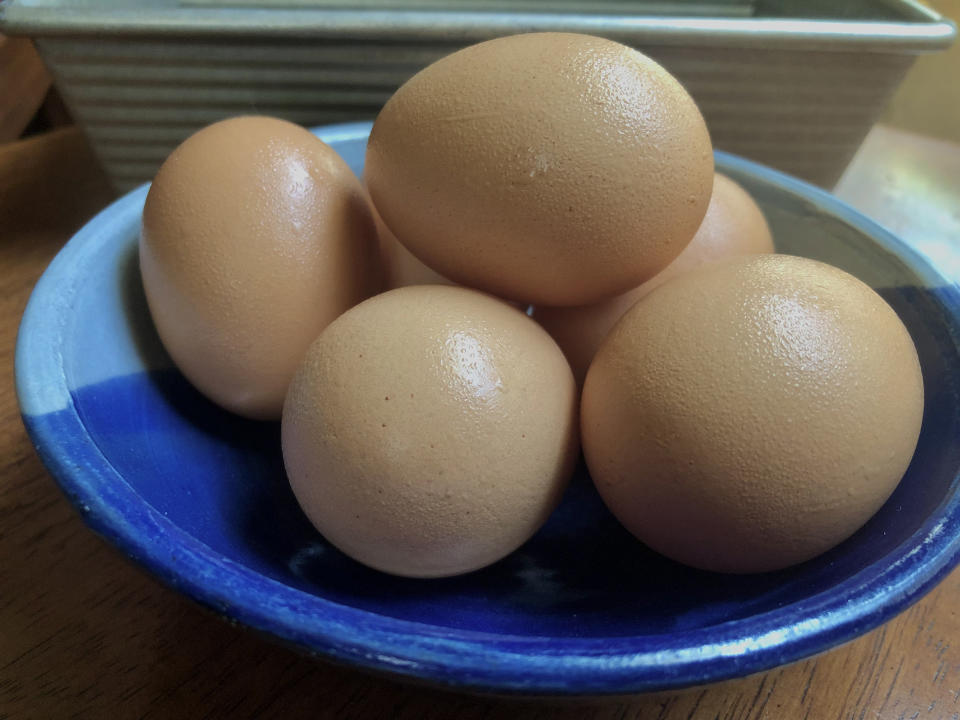
Similar 20-minute videos are a dime a baker’s dozen, a sort of boring and pedestrian culinary trolling, drawing people in for just long enough to see that they aren’t usable. There’s no punchline and no real art to them. You want cooking comedy? Check out SNL’s "Bass-O-Matic," still jaw-dropping after 45 years, or if you have an even stronger stomach, maybe the 1962 General Foods "Joys of Jello" cookbook. These assembly-line viral videos though? They’re spam even when there’s no Spam, and the eggs (why is it always eggs?) are going to end up in a badly taxidermied mess, like a fraudulent side-show "mermaid." Fish bones. Wooden skewers. Dried leaves. And is that dental floss?
That’s why Jaime Fielding’s viral no-peel hack is a breath of fresh … egg.
Fielding is a North Carolina mom with a personal interest in health and wellness, and she started sharing recipes, kitchen hacks and nutrition tips on her Instagram and TikTok a few years ago. Her videos don’t push any of the usual fad diets, instead focusing on a balance of fresh fruits and vegetables, whole grains and lean proteins. As a registered dietitian, I certainly approve of that overall approach.
Fielding loves egg salad but hates the peeling. A few weeks ago, she got the idea to try baking cracked eggs in a loaf pan in order to avoid the onerous part of the prep. She made the video of her first try, and it worked, so she posted it without giving it much thought. A lot of other people have given it thought, though — it’s been viewed over 14.5 million times on TikTok since its posting on April 6, and several thousand more on Instagram.
It certainly looks easy. In Fielding's under-40 second video, she greases a loaf pan, drops in 7 cracked eggs, and bakes them at 350 F for thirty minutes. The trick? Fielding knew they would dry out without some kind of intervention, so she put them in a water bath for baking so that they heat more evenly and gradually. When they’re done, she just pops the solid loaf out onto the cutting board and chops them for egg salad.
So does it work? The short answer: yes.
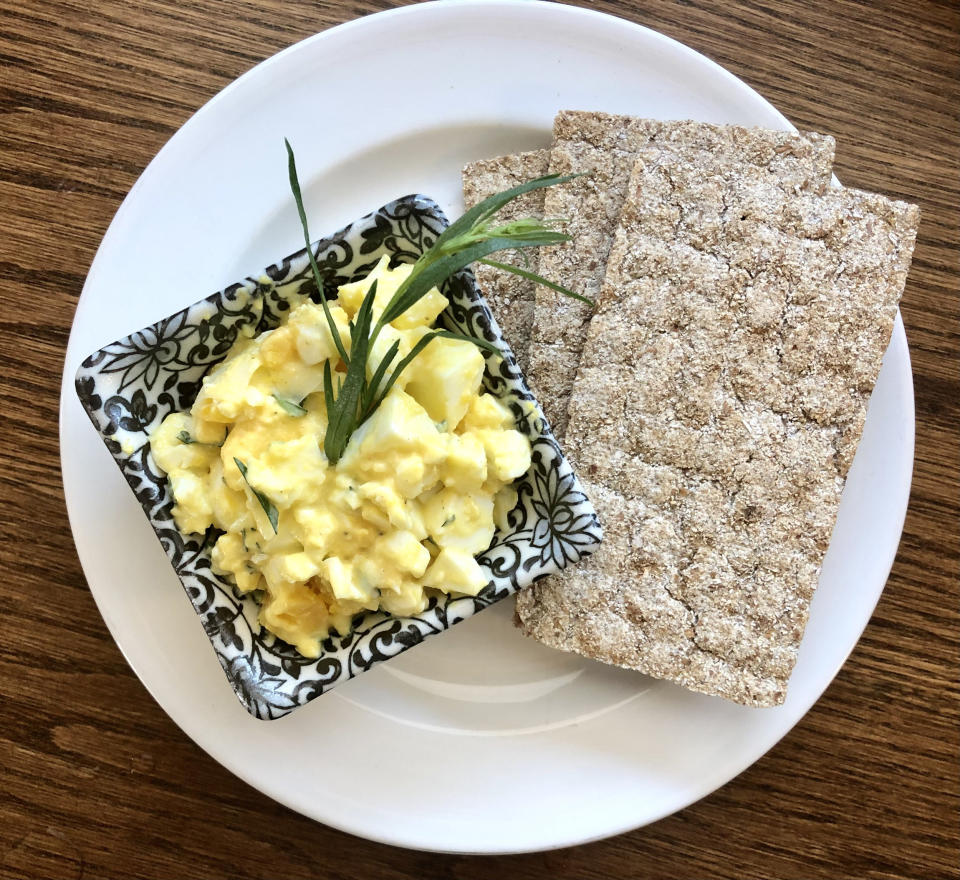
But I do have just a couple of notes.
Here’s my setup: a loaf pan, raw eggs and a water bath in a 9-by-13-inch cake pan.
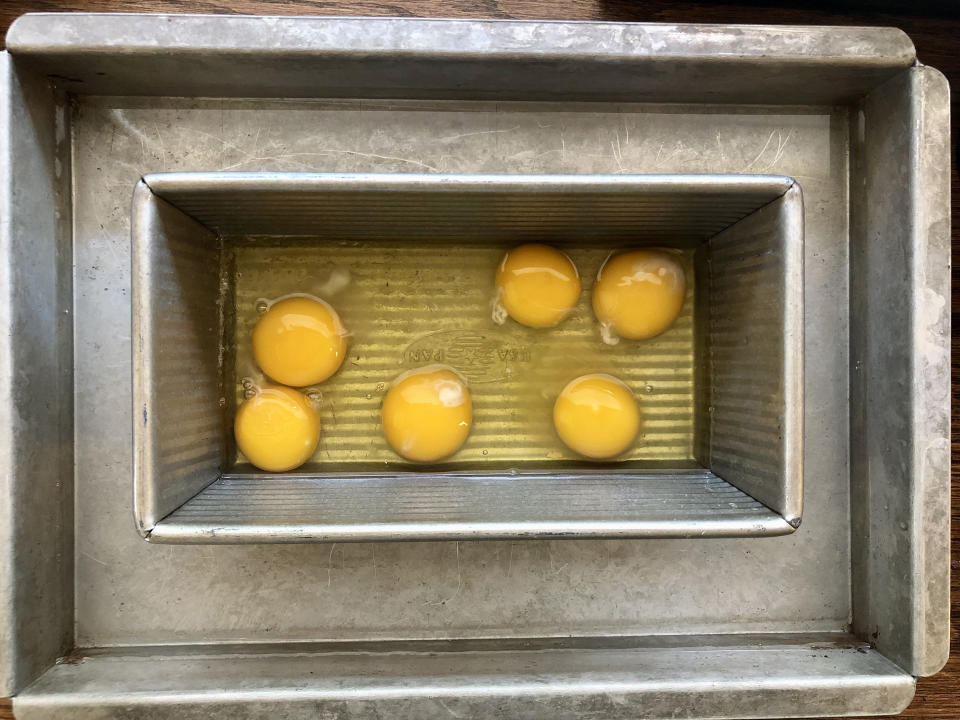
The bottom of my loaf pan is angled and smaller, so I used an even six eggs hoping to get a similar thickness. Since breaking the yolks is undesirable if you’re aiming to get a facsimile of boiled eggs, I just let the yolks fall where they may. Fielding's TikTok didn’t specify, so I assumed the eggs were cold right out of the fridge, and I used water straight out of the tap. I baked as instructed in a preheated 350 F oven for 30 minutes.
Fielding takes them out of the pan quickly in her video, and I think that’s a good idea in general, to prevent the dreaded gray-ringed yolk that results from iron and sulfur reacting together with overcooking. They came out of the loaf pan with no problem, much to my surprise; one of my main worries about this hack was that time saved with no peeling would just be transferred to scrubbing.
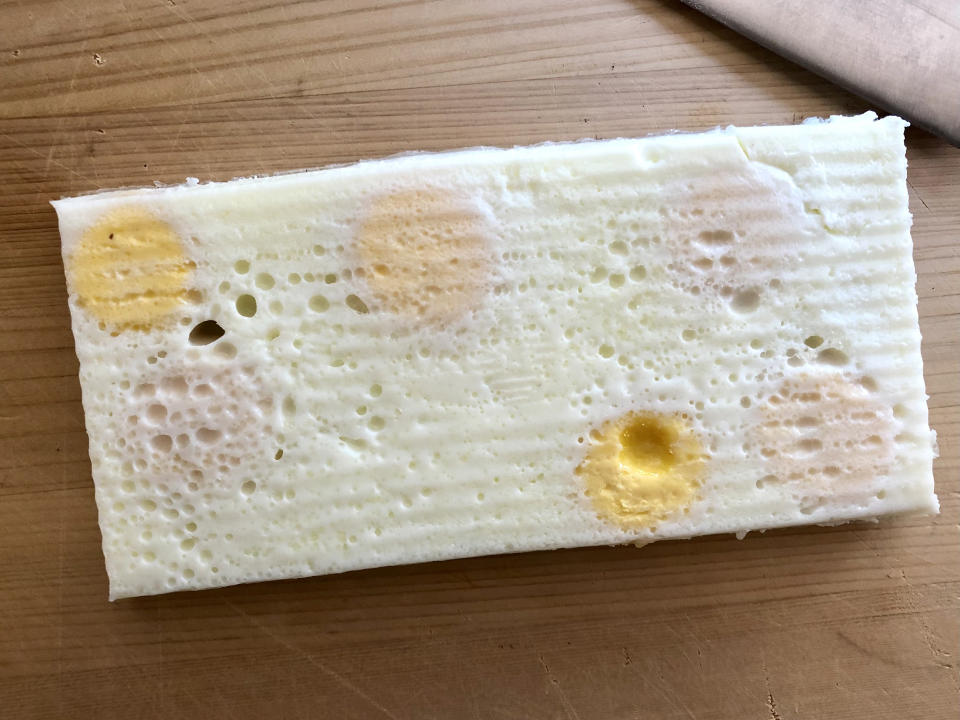
They are cooked, but perhaps a tad under-done for egg salad.
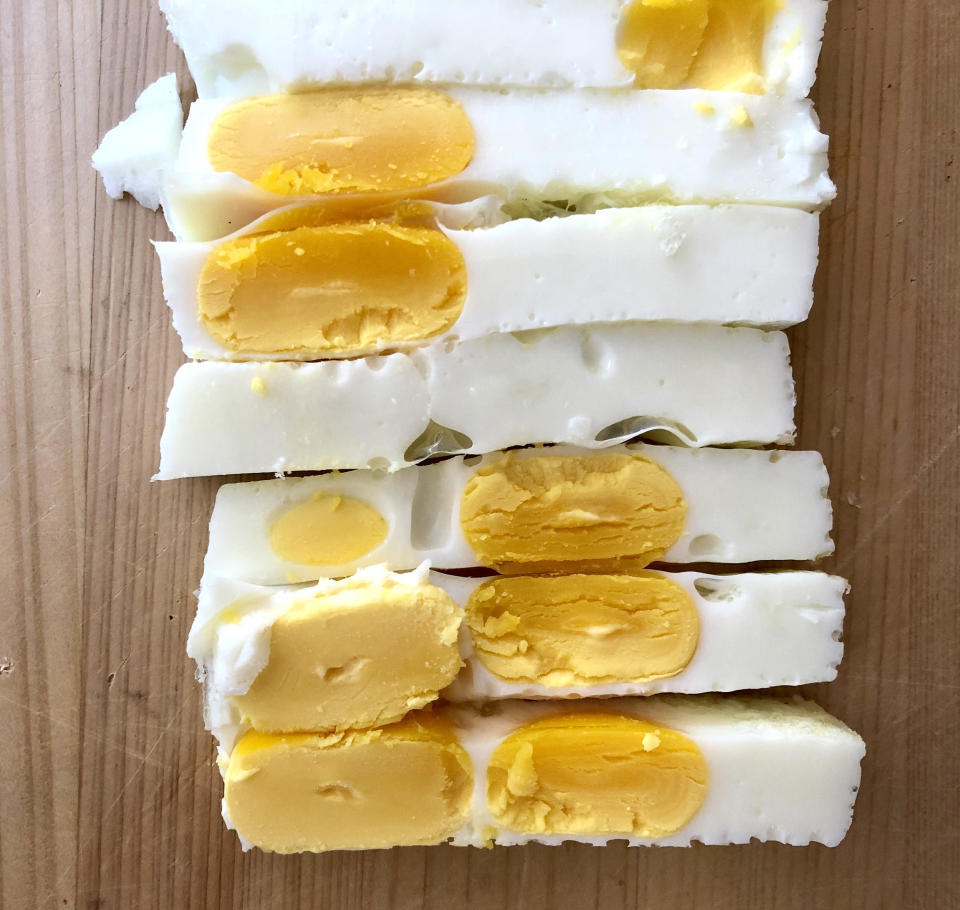
I was afraid to cook them any longer, though, because even with the water bath, there are spots on the surface that are dried and almost plastic-y, especially around the edges.
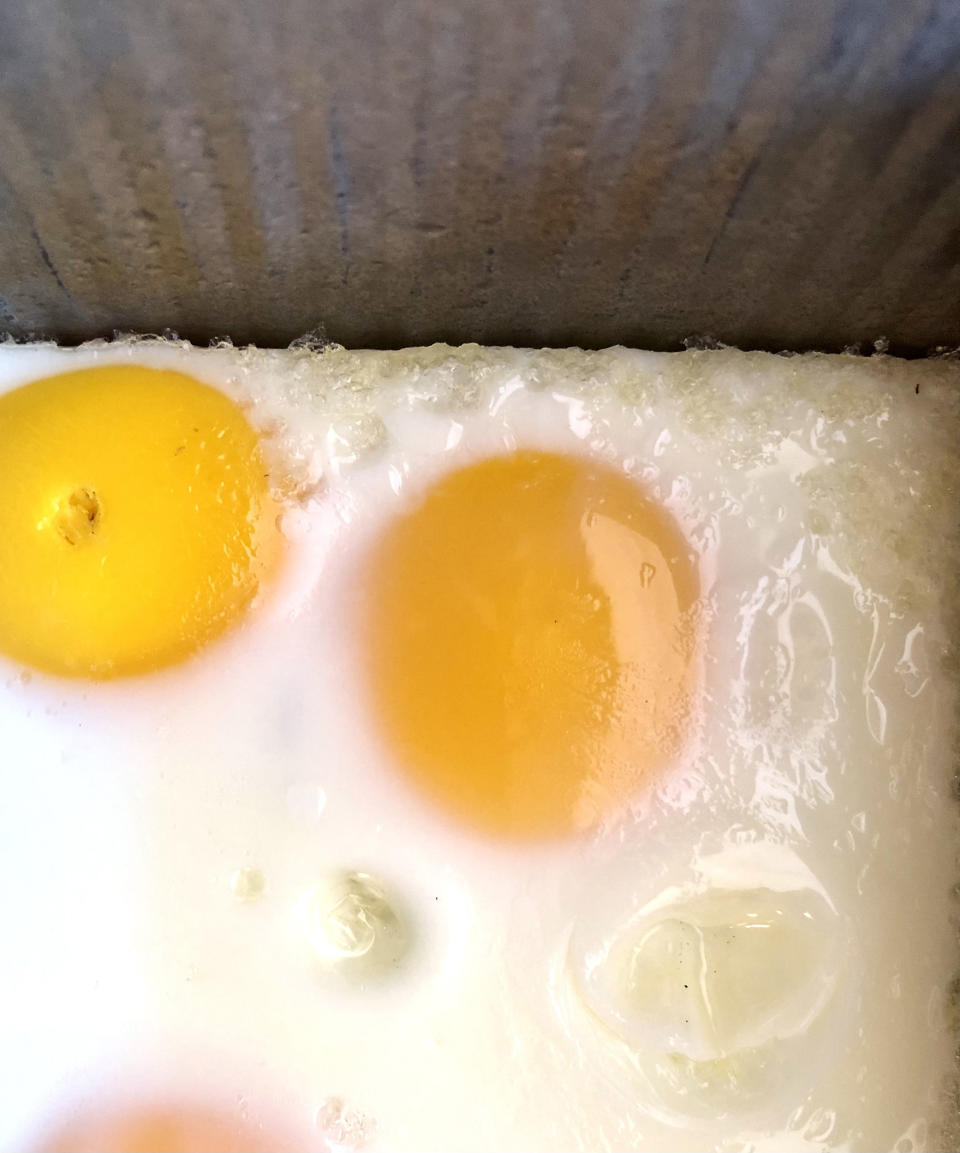
They did chop up really nicely, but if you look closely, you can see a few crunchy bits.
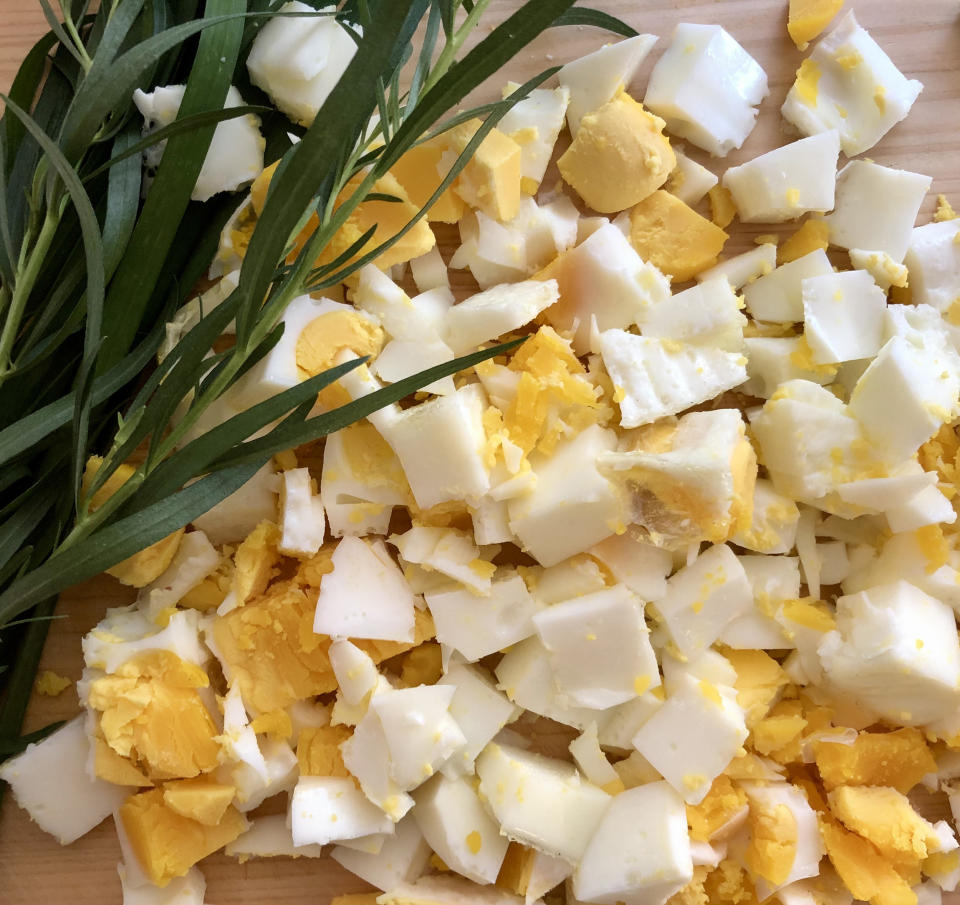
Ovens vary a lot, so this exact method probably works perfectly well for some, and a few dried spots may not bother everyone. They bother me, though, so I did a little proof-of-concept experiment with just one more egg. I let it come near to room temperature before cracking it into an oiled dish, and I covered it with foil before baking.
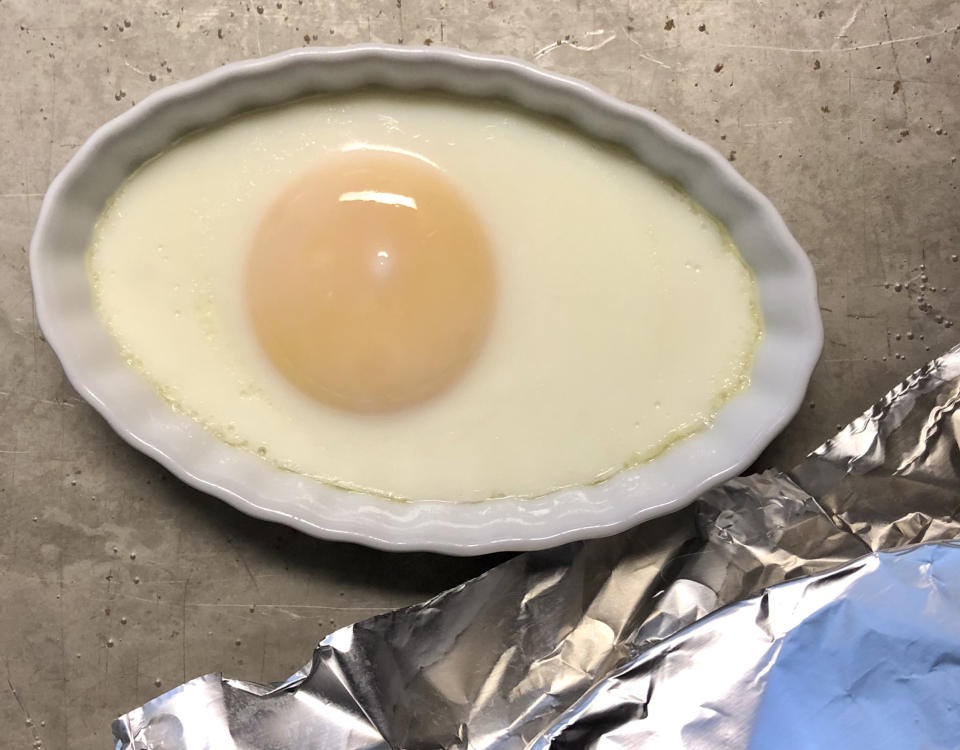
It may be giving us the evil eye, but through a combination of added insulation and moisture retention, this one doesn’t have any hard bits. The yolk was all the way baked this time, too, probably because I let it warm up outside of the fridge first. I suggest using Fielding's loaf-pan method with six or seven eggs, letting them come to room temperature first to make sure the yolks cook all the way and covering tightly with foil to help yield a more even texture. Start checking for doneness about 25 minutes in, and be prepared to re-cover and go a few minutes longer especially if your eggs were cold. If the white is set but the yolks are under-done, leave them in the hot water bath out of the oven for a few more minutes, but be careful about leaving them for too long, lest you court the Gray Ring of Despair.
Fielding said she has gotten lots of comments suggesting their own “foolproof” technique, from steaming in the pressure cooker to dropping regular boiled eggs into cold water to ease their peeling, but like many of us, she said she has had inconsistent results. The shells stick sometimes, or the eggs come out too moist for her taste. That’s the key to navigating these supposedly infallible methods, really: Preferences vary. Some people want those softer, steamed eggs. Some people don’t mind peeling them after boiling. Whatever works for you is best.
As much as I like this egg salad inspo, though, my favorite thing to learn from Fielding is a willingness to experiment even if it results in some failures. She said she’s even tried to come up with a baked method for deviled eggs, so far without success, but I love her gustatory gusto.
Now, ready to try your own hand at baked egg salad? Get cracking!

